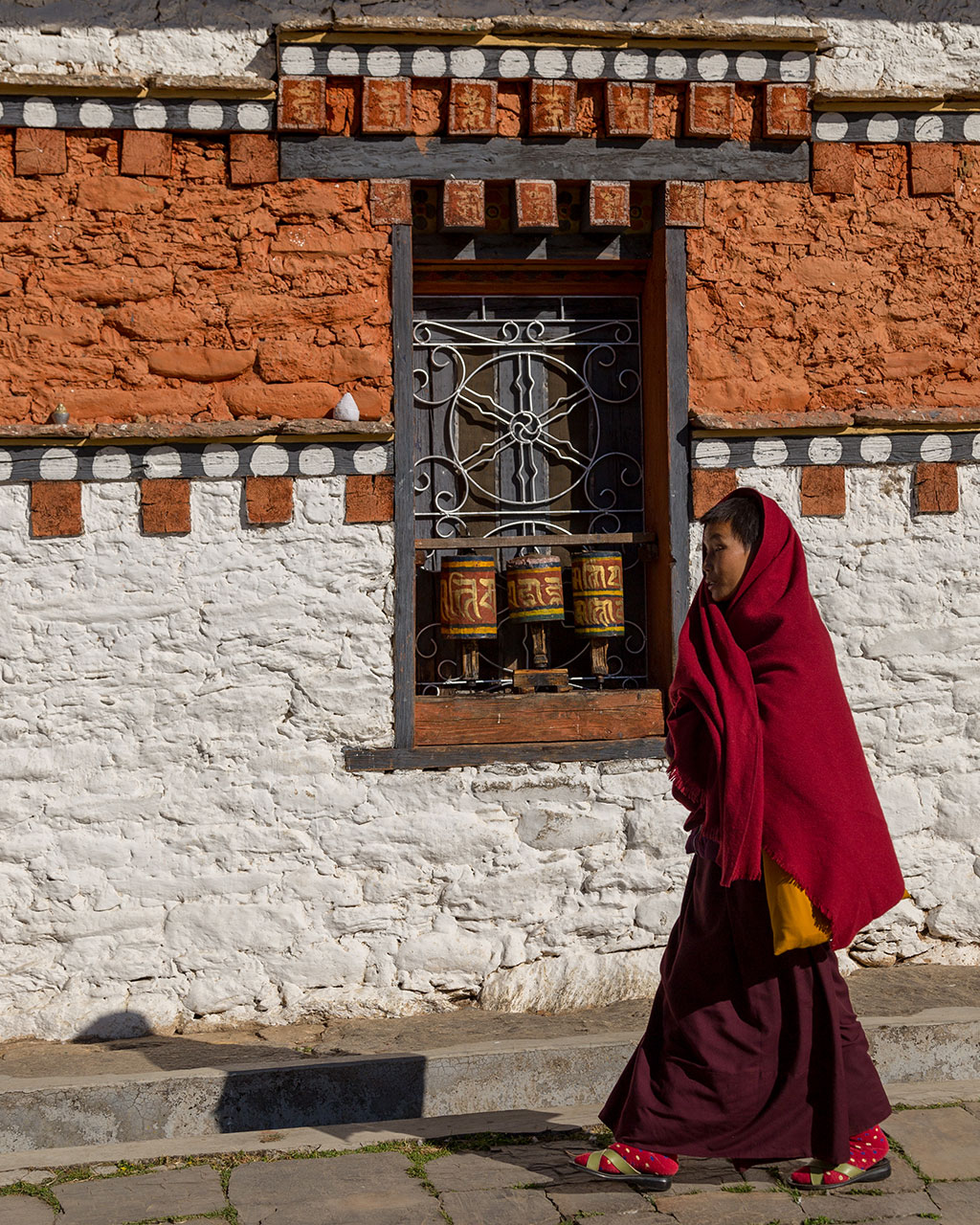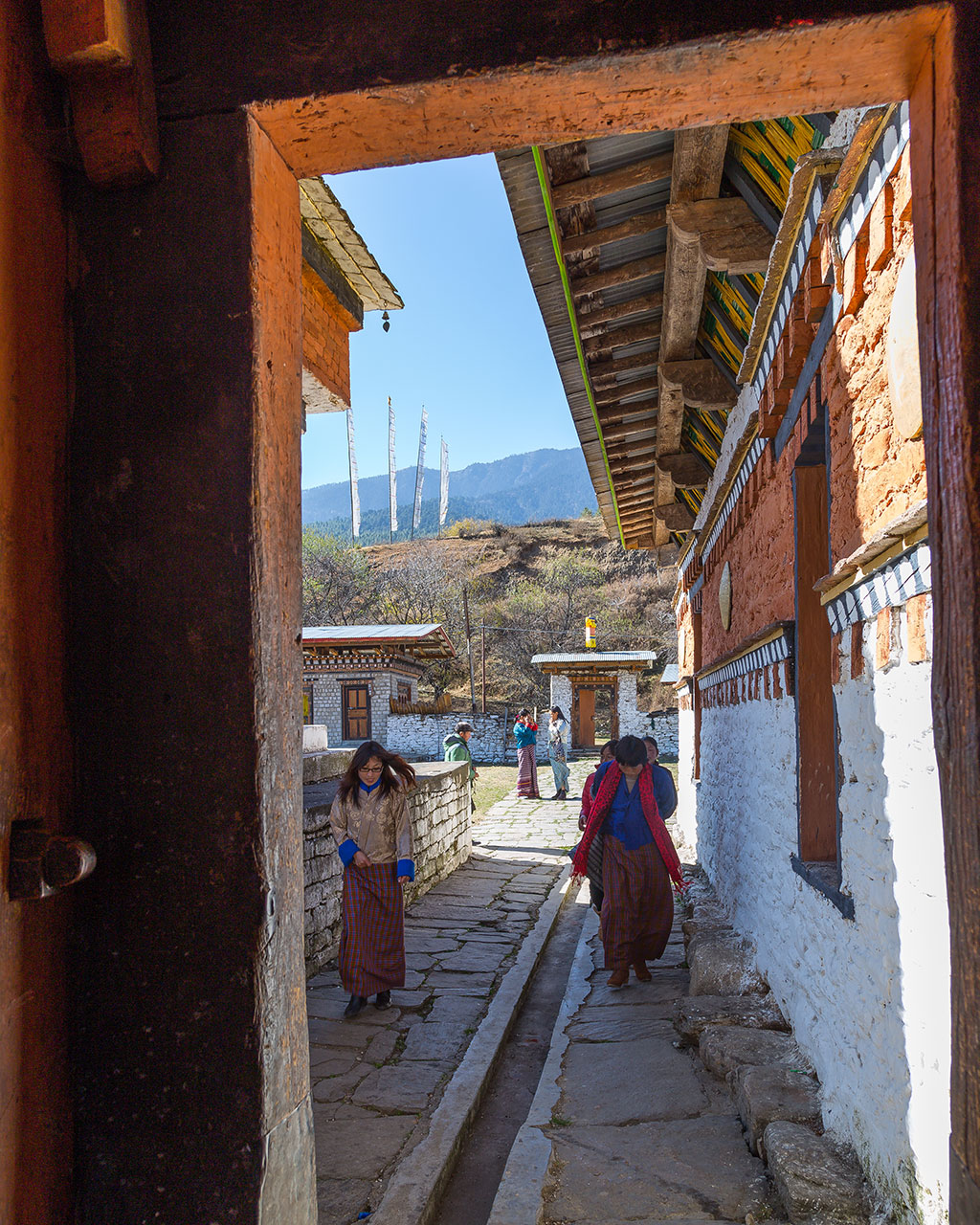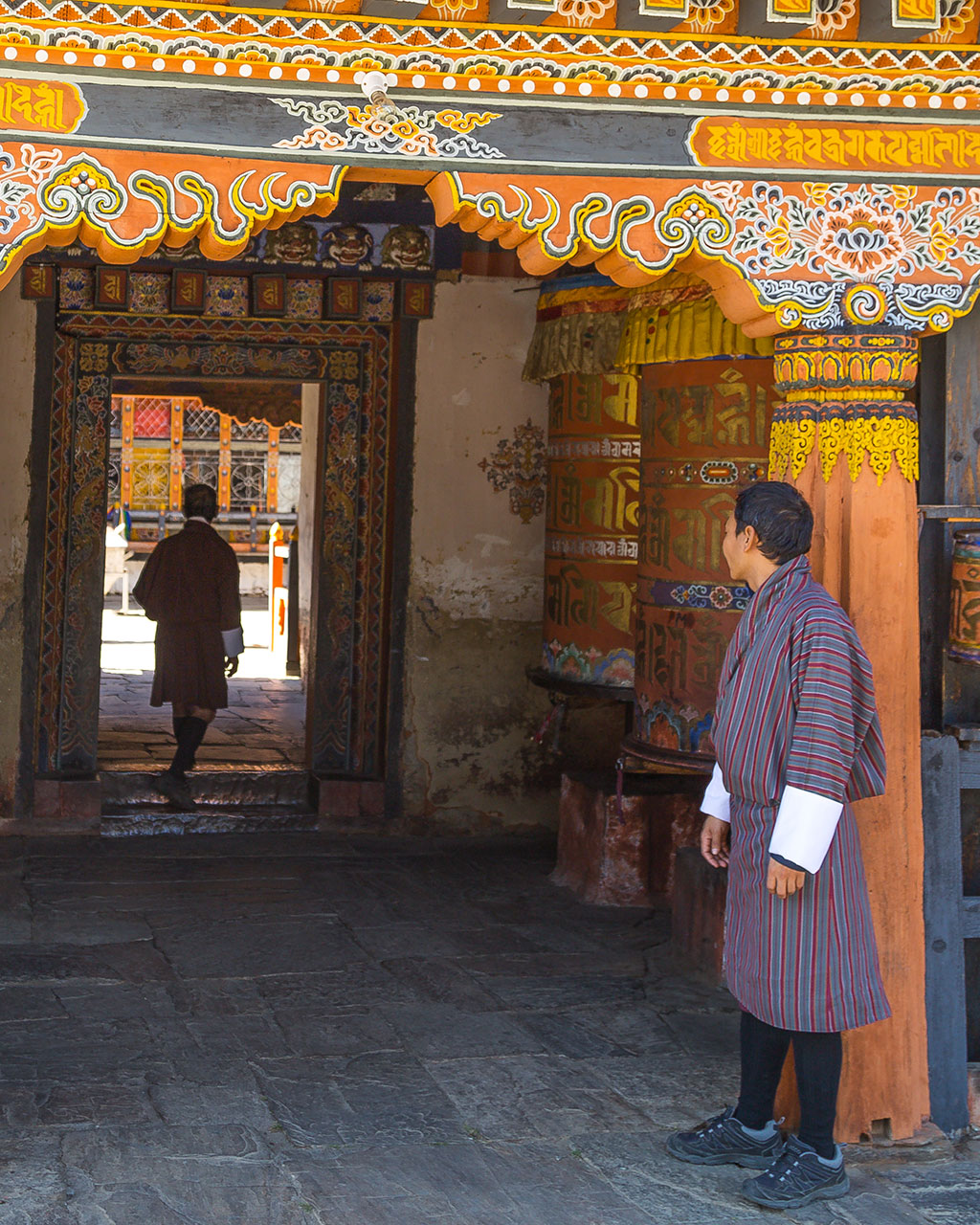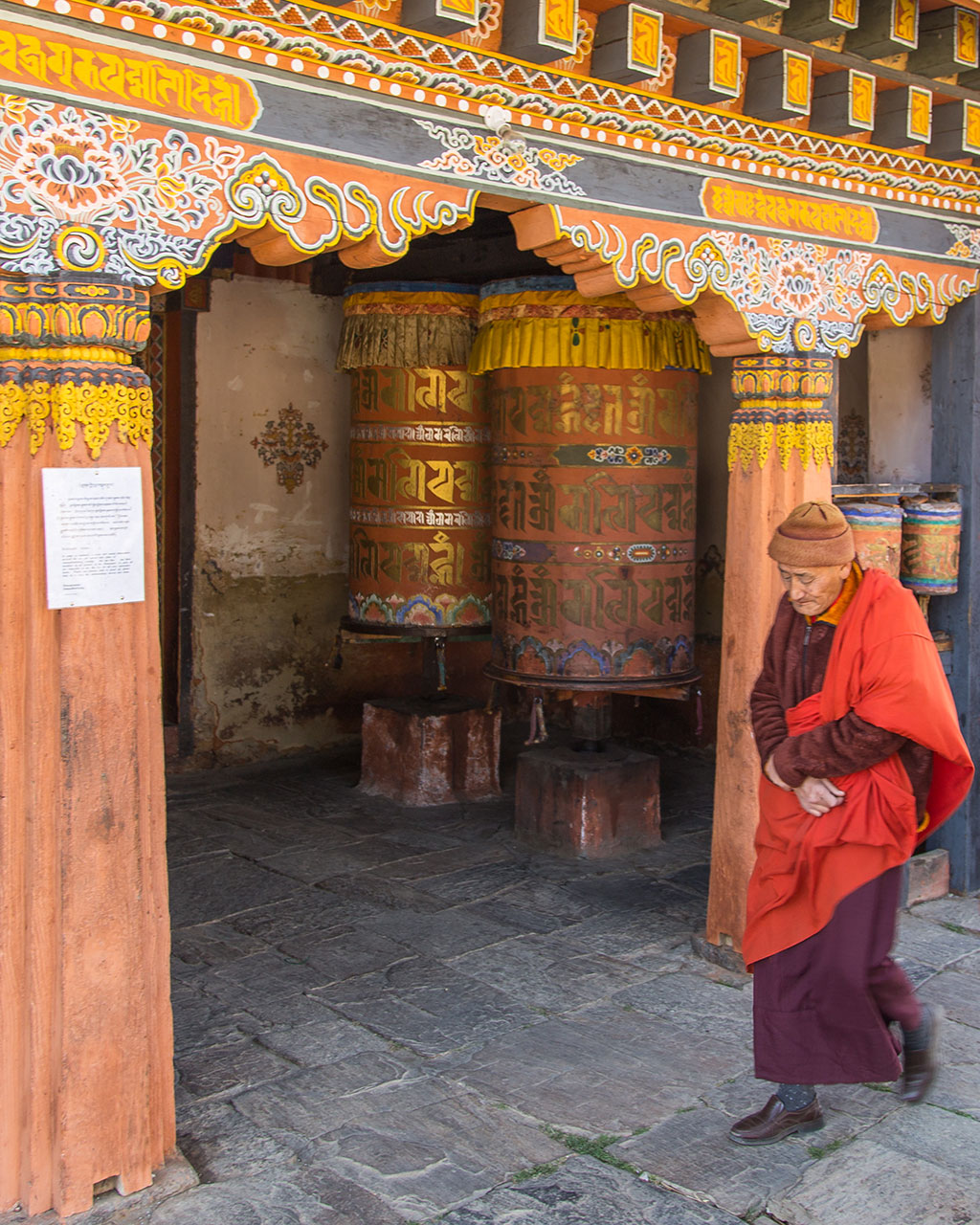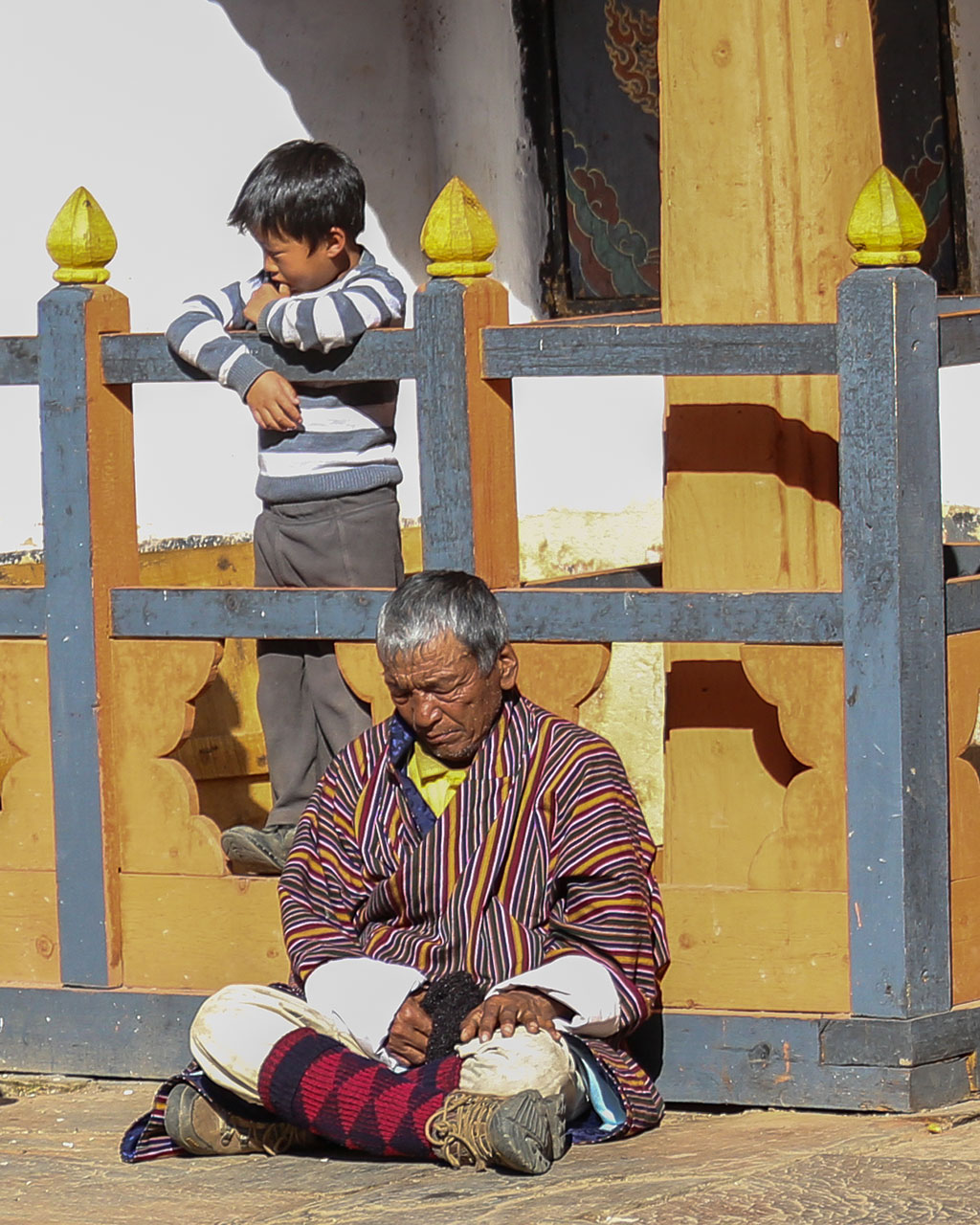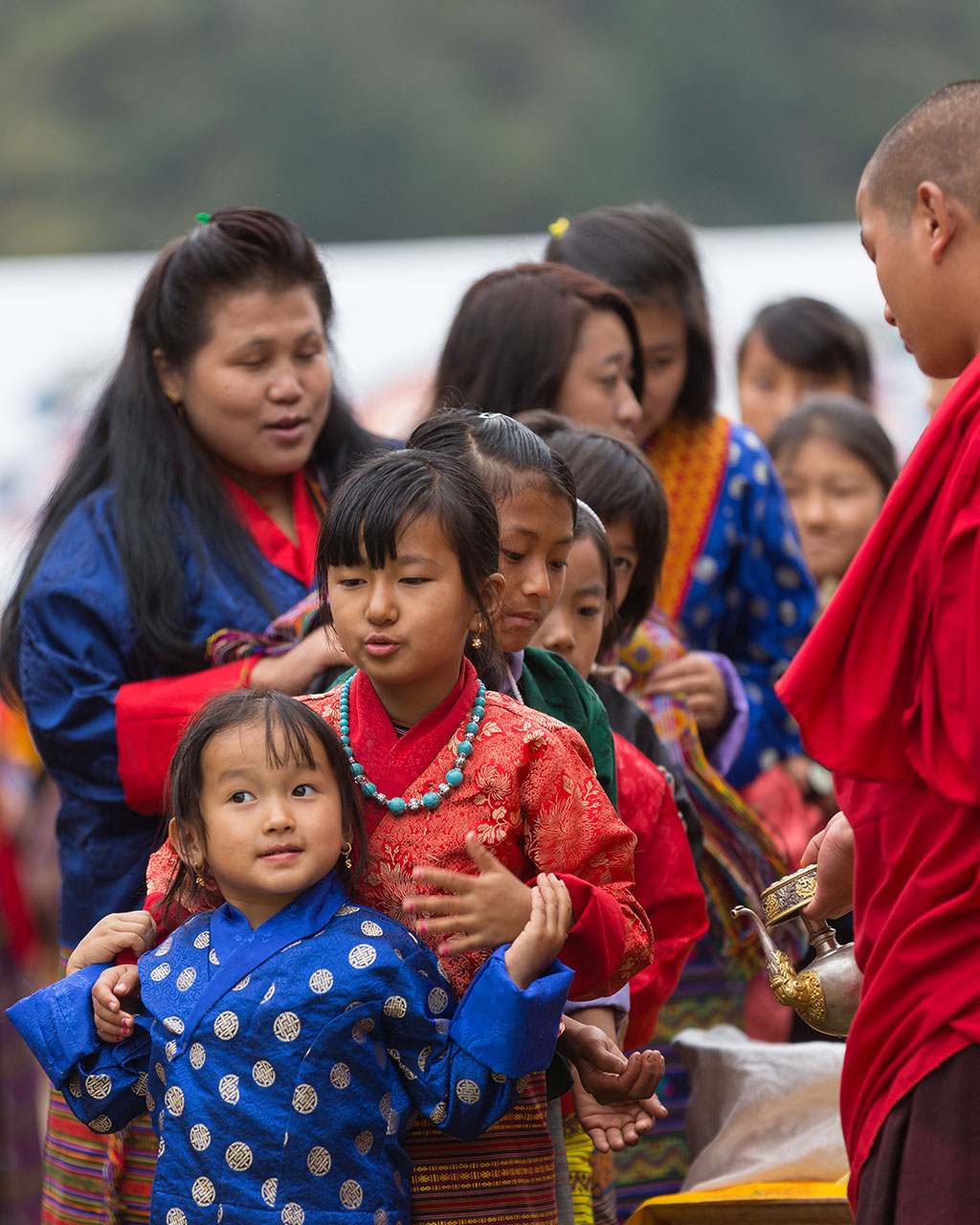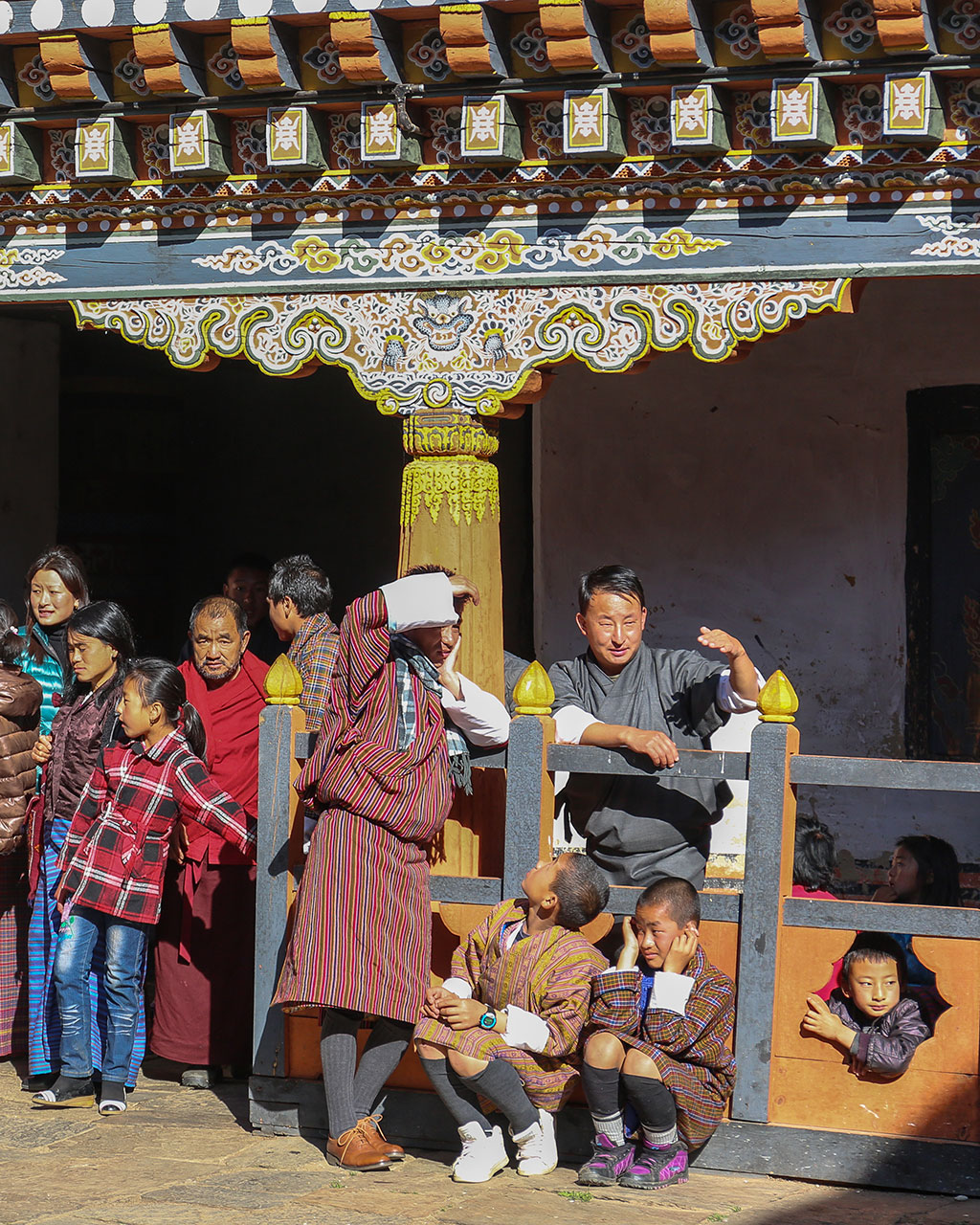Religion
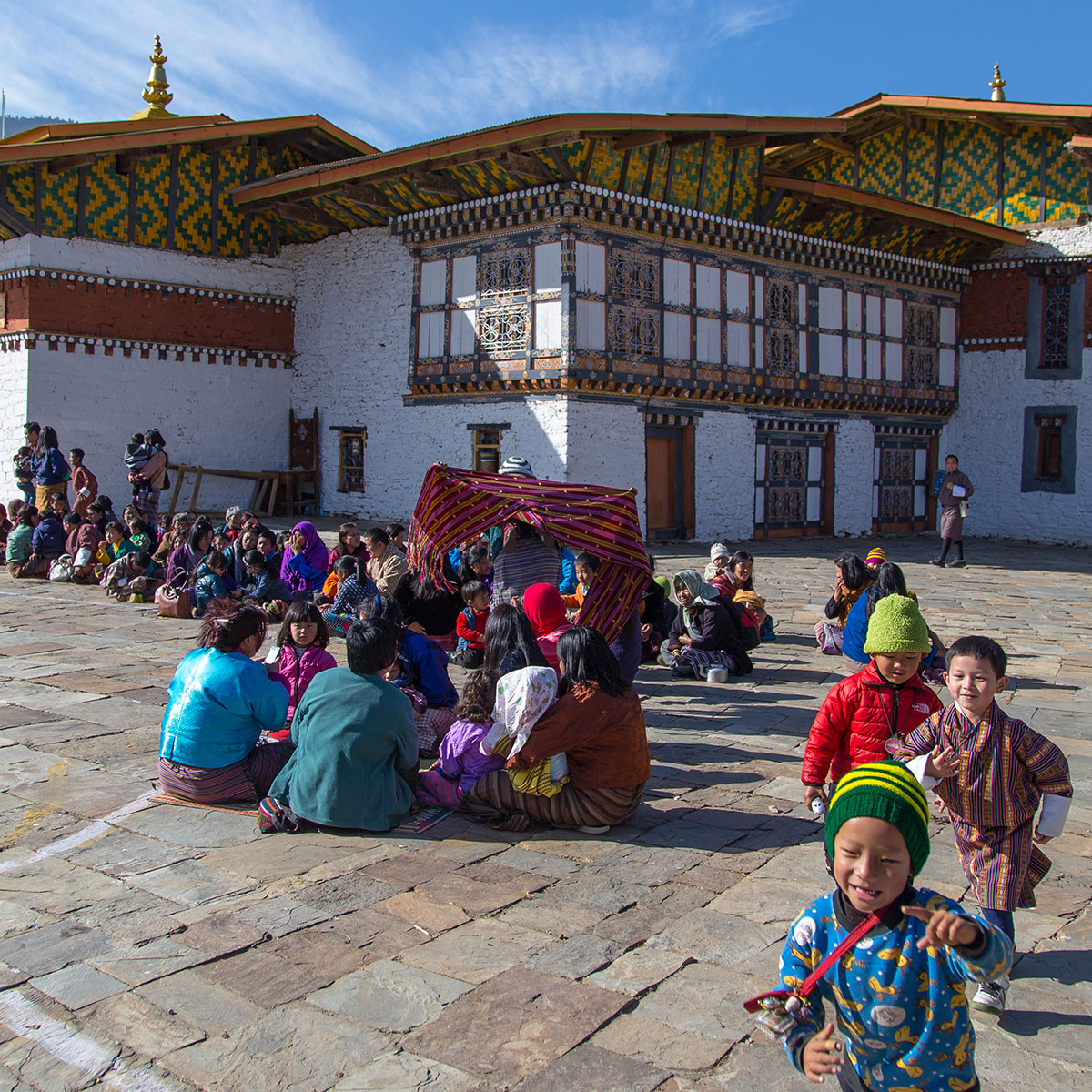
Pilgrimages are a familiar aspect of Bhutanese life, mainly undertaken in the winter when agricultural demands are low. Travelling around the country to holy places has become much easier with the present road network connecting most parts of Bhutan. Before the roads were developed, pilgrimages were undertaken on horseback and foot, and in smaller groups. For many of those who live in the city, an annual pilgrimage is a way to pay respects to their roots. Gyelmo remembers family pilgrimages to Takstang, spending several days on the road to Paro. She maintains this tradition with her family today, taking advantage of connectivity to visit holy sites she was too far away from as a child.
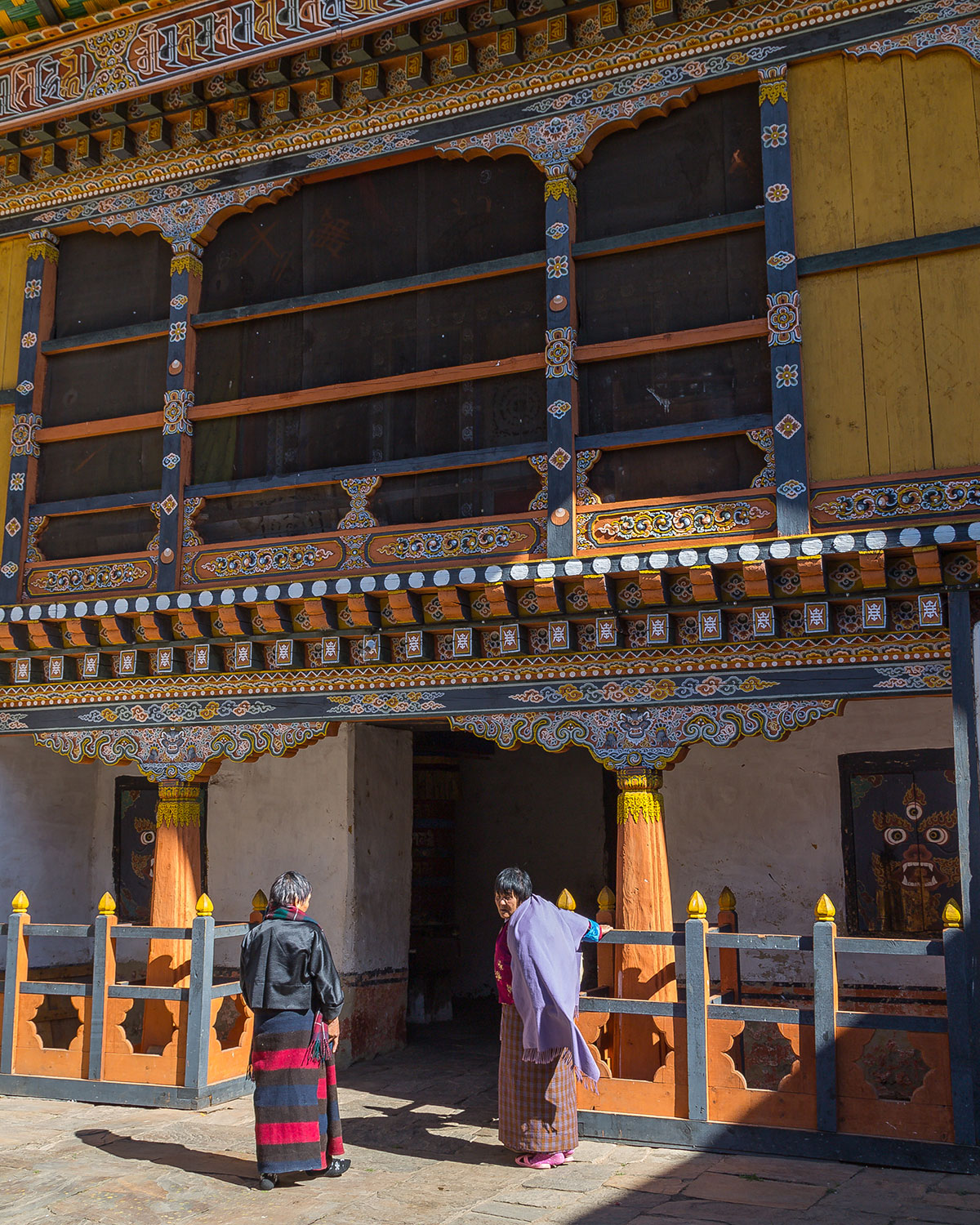
Gyelmo and her family made a recent pilgrimage to the famous Jambay Lhakhang temple in the Bumthang region for its annual festival, travelling by car and staying with friends and family along the way. Considered to be one of the most auspicious sites in Bhutan, the Jambay Lhakhang in Jakar was built in the seventh century by the king Songsten Gampo. A single storey structure, it comprises a complex of buildings around courtyards. It is believed that the 108 temples were built in a day to subdue a goddess that was preventing the spread of Buddhism.
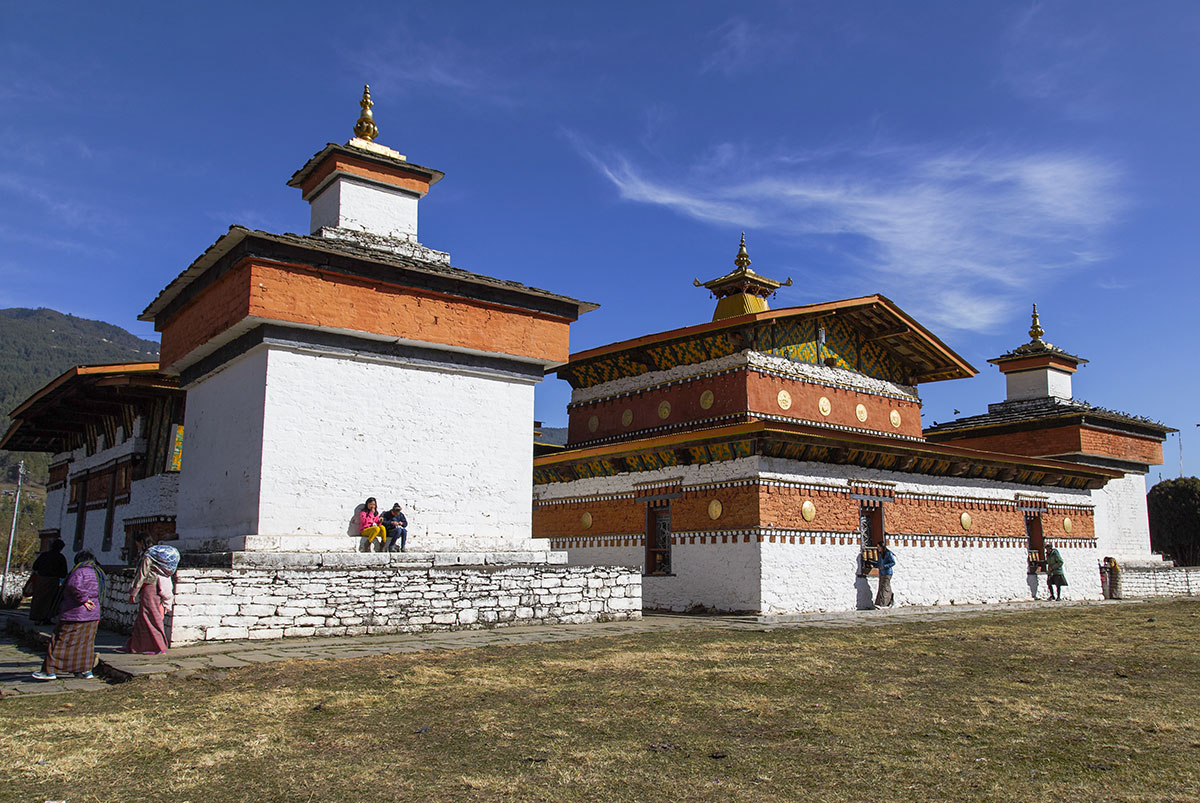
The Jambay Lhakhang is built very differently from the typical Bhutanese style. Features reminiscent of Tibetan and Chinese influences are seen in the details, especially the roof. The scale of the temple is also more intimate, not imposing like later edifices. The courtyards and corridors are like a large house and the energy is warm and comforting. It represents the earliest presence of Buddhism in Bhutan, prevalent in the Bumthang region. Early peaceful incursions from Tibet were recorded through this area. It is said that the region was once ruled by an Indian king Sindhuraja who was cured of an illness by Guru RinpochePadmasambhava, also called Guru Rimpoche, Tibetan Slob-dpon (“Teacher”), or Padma ‘Byung-gnas (“Lotus Born”), (flourished 8th century), legendary Indian Buddhist mystic who introduced Tantric Buddhism to Tibet and who is credited with establishing the first Buddhist monastery there., and Buddhism has been practised here since then.
Jambay is a wondrous place to experience on a festival day. Arriving at the temple, one can see hawkers selling their wares – jewellery and sacred symbols, sweets and ice cream. As one moves through the first courtyard, the crowds are already gathering, on the steps, along the edges, in preparation for the sacred dances to begin. People are here from all over Bhutan to conduct rituals and poojas for their well being. The quieter second courtyard leads to the main temple, dedicated to the maitreya Buddha. The smell of incense fills the air and devotees circumambulate the shrine. In the front, a few monks sit praying.
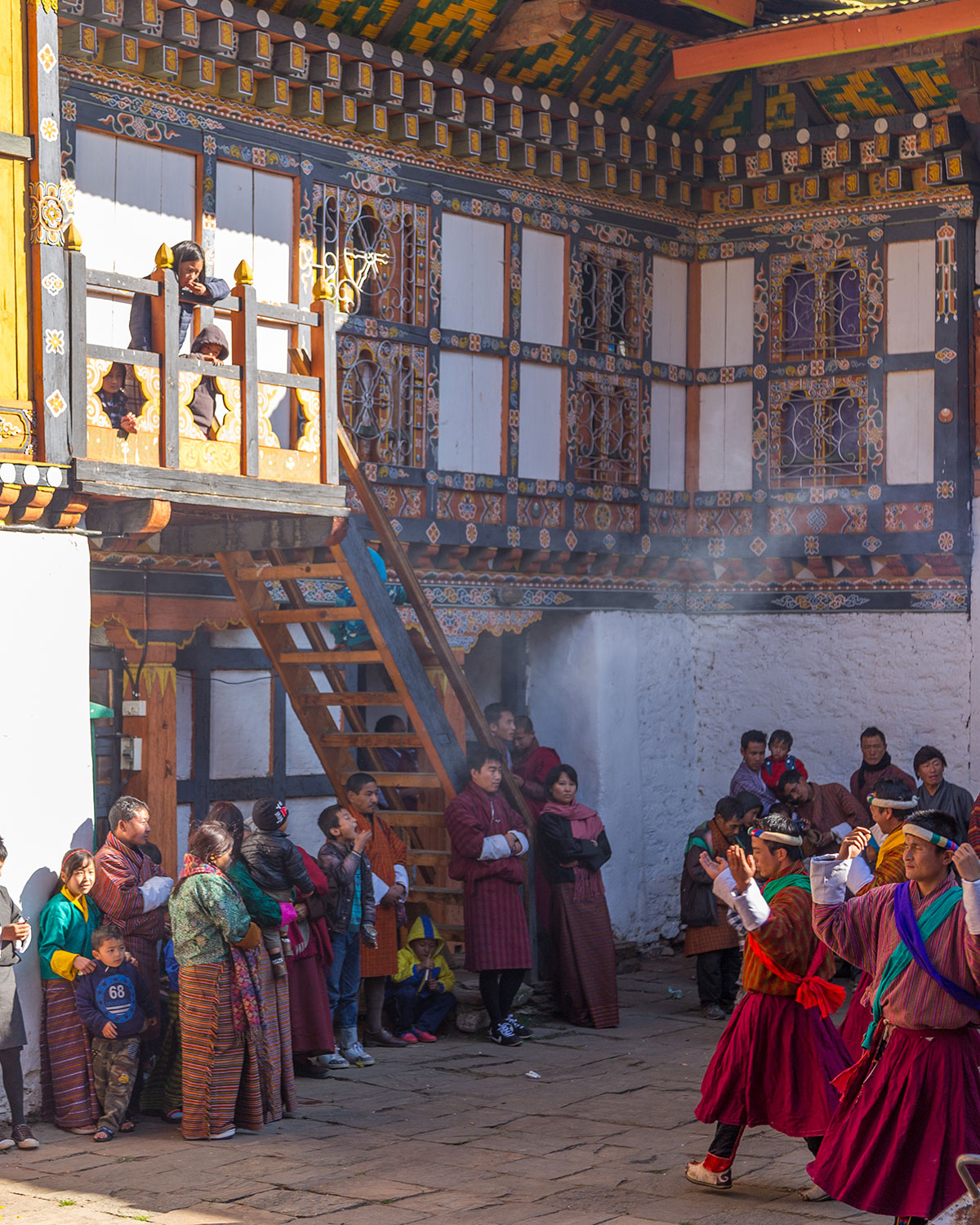
Gyelmo is asked to pay her respects at the shrine, and along with the others she chants and prostrates before the idols. Heads covered, they spend a few minutes in prayer, before they join the crowds outside. On this festival day, the temple and its spaces, inside and outside, become venues for veneration and celebration. Soon the dances move to the yard outside, where even more crowds are gathered. Having carried a packed lunch, the family gathers at a corner, to replenish their stomachs before resuming the reverie. The dances go on all day and night, slowly gaining a trancelike state. The human mind craves the occasional catharsis, the total surrender and pushing the limits of mind and emotion, which these rituals offer.
Vignettes
